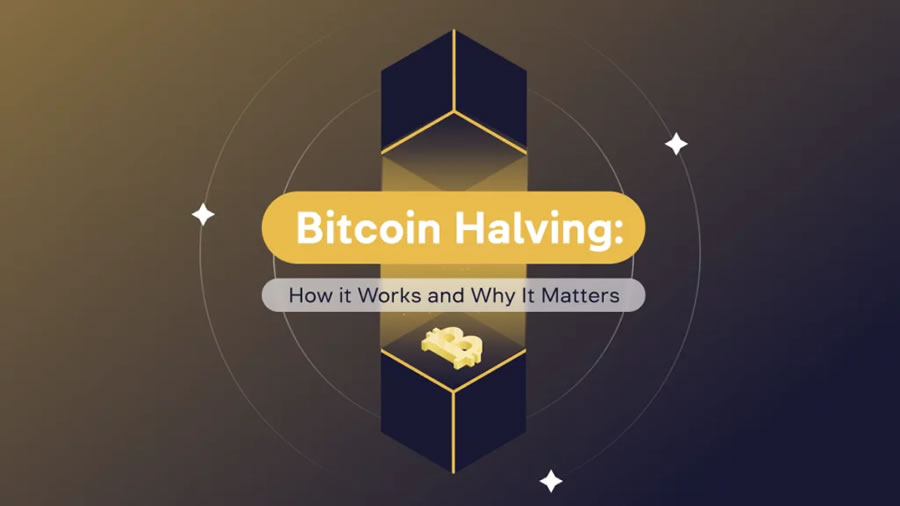🪙 What is the Bitcoin Halving? Implications and Historical Context

Bitcoin (BTC) has gained substantial attention and adoption over the years, driven by its decentralized nature and potential as a store of value. One of the crucial events in the Bitcoin lifecycle is halving, a programmed reduction in the reward for mining new blocks. This event occurs approximately every four years and has significant implications for the entire cryptocurrency market. The most recent halving countdown was completed on April 19, 2024, resulting in a further reduction of the block reward from 6.25 BTC to 3.125 BTC.
This article delves into what Bitcoin halving is, its history, and the outcomes of past halvings, providing insights into what investors and miners should consider before the next halving approaches.
When Was the First Bitcoin Halving?
The first Bitcoin halving took place on November 28, 2012. This event marked a reduction in the block reward from 50 BTC to 25 BTC. The BTC halving cycle is programmed to occur every 210,000 blocks, roughly every four years, ensuring a controlled and predictable release of new bitcoins into circulation. The primary objective of this mechanism is to mimic the scarcity of precious metals and to combat inflation by reducing the rate at which new bitcoins are created. This makes Bitcoin a deflationary asset, potentially increasing its value over time as its supply becomes more limited.
A crucial concept associated with this process is the “stock-to-flow” ratio, which evaluates the existing total supply of Bitcoin against the amount of new supply introduced to the market. Each halving significantly boosts this ratio, demonstrating Bitcoin’s increasing scarcity. This ratio is often seen as a vital indicator of Bitcoin’s potential for long-term value growth.
Often compared to the stock-to-flow ratios of precious metals like gold, Bitcoin’s increasing ratio after each halving strengthens the perception of Bitcoin as a form of digital gold – a modern-day store of value. As the stock-to-flow ratio of Bitcoin improves, it underscores the asset’s deflationary characteristics and aligns it more closely with traditional safe-haven assets. Now let’s see how BTC halving affected its price before and after each event.
Bitcoin Halving History and Its Outcomes
Bitcoin halving events have historically led to significant changes in the cryptocurrency market, particularly in terms of price movements on a crypto halving chart. Examining the past three halvings provides valuable insights into these trends.
- The first Bitcoin halving in 2012 saw a remarkable increase in Bitcoin’s value. Twelve months before the halving, Bitcoin experienced a price surge of approximately 385%. Following the halving, Bitcoin’s price skyrocketed by an astonishing 5,089% over the next year. This dramatic rise highlighted the market’s reaction to the reduced supply of new bitcoins.
- The second halving occurred on July 9, 2016, reducing the block reward from 25 BTC to 12.5 BTC. In the year leading up to this event, Bitcoin’s price increased by 142%. Post-halving, the price saw a further increase of 284% in the subsequent year. This halving reaffirmed the positive impact of reduced supply on Bitcoin’s market value.
- The next halving occurred on May 11, 2020, reducing the block reward to 6.25 BTC. Unlike the previous halvings, the price increase before this event was more modest at 17%. However, the post-halving period saw a significant price jump of 559% over the following year, which shows the long-term bullish sentiment associated with halving events.
For miners, the reduction in block rewards means less revenue per block mined, necessitating more efficient mining operations to remain profitable. This often leads to innovations in mining technology and a shift towards more sustainable energy sources to reduce operational costs.
Investors, on the other hand, view halving events as potential catalysts for price increases due to the reduced supply of new bitcoins entering the market. Looking at the Bitcoin halving chart, one may notice that while short-term volatility, the long-term trajectory often remains positive. Investors should consider the timing of their investments, market sentiment, and broader economic factors when making decisions around halving events.
Bitcoin halving has a notable impact on other crypto assets due to Bitcoin’s leading role in the market. As Bitcoin’s value escalates, investor confidence typically grows, leading to heightened interest and investment in alternative cryptocurrencies. Many altcoins exhibit price movements that are closely linked to Bitcoin’s performance. Consequently, the heightened focus on Bitcoin during halving events can also enhance liquidity and trading volume for other crypto assets, potentially increasing their value and market presence.
Bitcoin halving is a fundamental event in the lifecycle of the cryptocurrency, influencing its supply dynamics and market behavior. Historical data from the first Bitcoin halving to the most recent ones indicate a strong correlation between halving events and subsequent price increases. As the new halving cycle has just started, understanding its implications can provide valuable insights for miners and investors.
Last Updated on June 25, 2024

